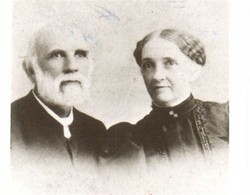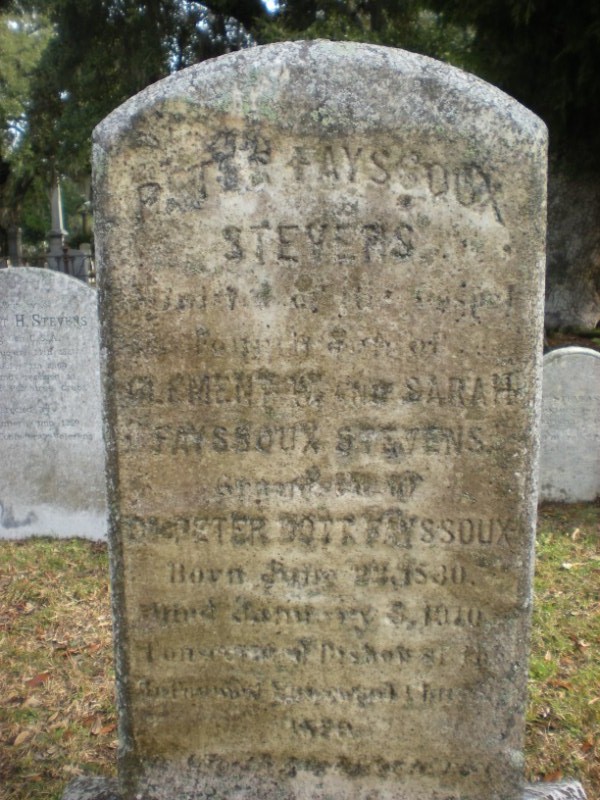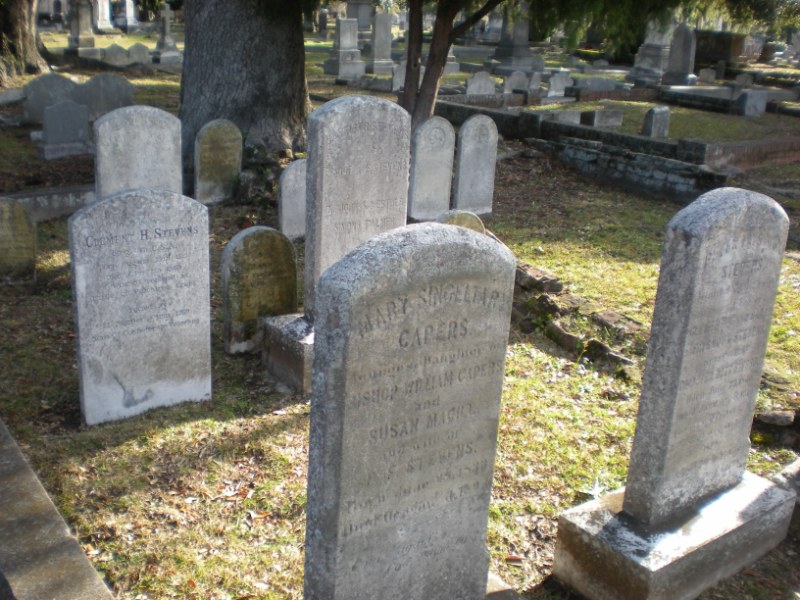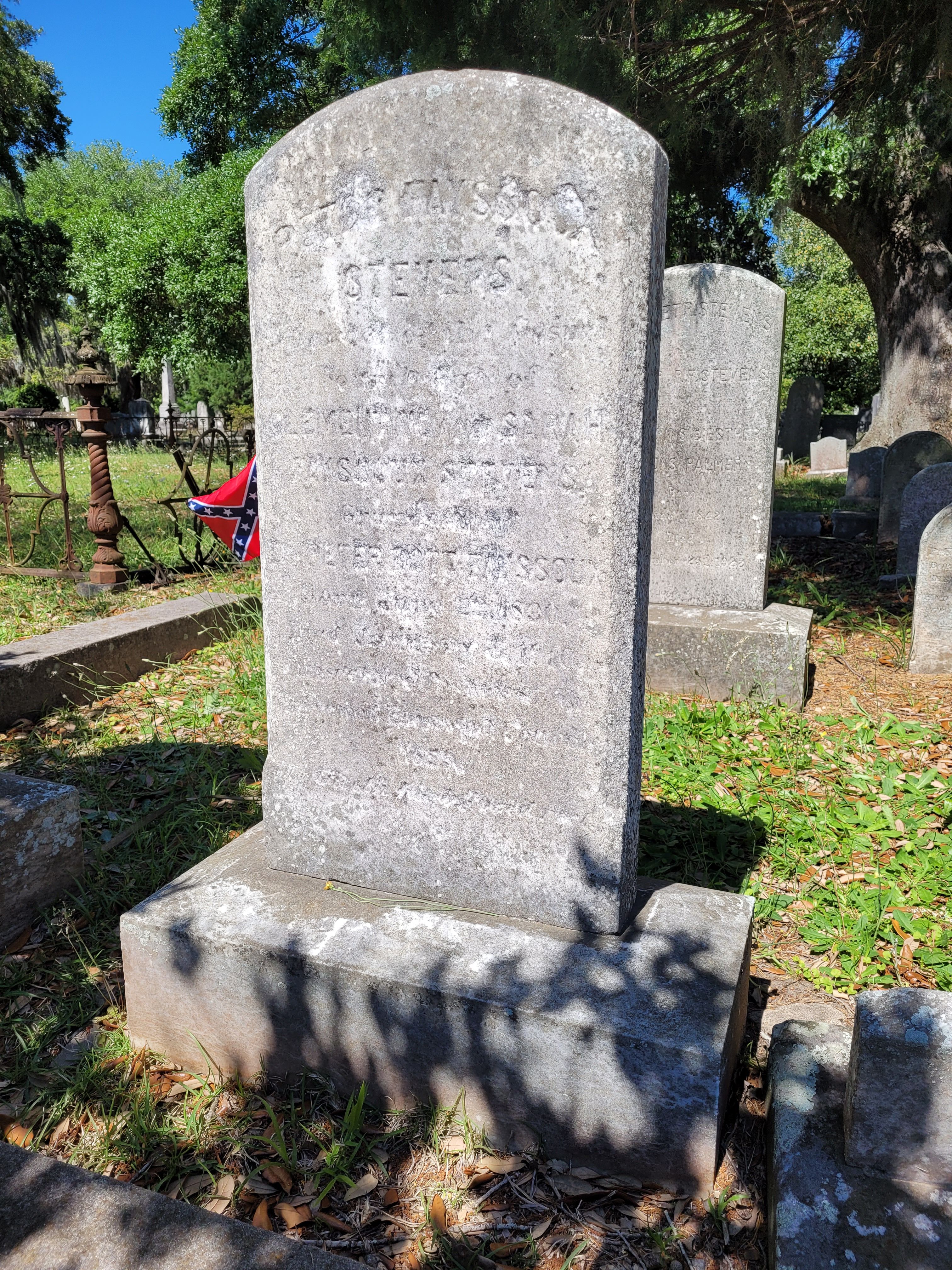Colored Ministers Will Act at R Rev P F Stevens' Burial
Body of Late Leader in Reformed Episcopal Church, Who Died Sunday, Will Sleep in Magnolia
Charleston, Jan 10-The funeral of Bishop Peter F Stevens of the Reformed Protestant Episcopal church, who died at his home here yesterday, will be held tomorrow at noon. The burial will be in Magnolia cemetery. The pallbearers will be negro ministers of his church, whose doctrines he taught for so many years to the negroes in South Carolina.
Sketch of his life
Bishop Stevens was born in Pendleton and received his education at the Citadel Academy, from which he graduated with honors in 1849. In 1851 he was elected professor of mathematics of the Arsenal Academy with the rank of first lieutenant. In 1856 he was promoted to the rank of captain at the Arsenal Academy and was transferred to the department of belles-lettres and French at the Citadel Academy. He was promoted to the rank of major in the Citadel Academy, and was placed in charge of the department of civil engineering and astronomy.
Maj Stevens' war record, although short, was marked by very brilliant and gallant service. At the outbreak of the war, he, with a detachment of cadets of the Citadel, was in charge of the Start of the West battery, famous in the history of the war as having fired the first hostile shot. His connection with that momentous event is told by John Payre Thomas in his history of the South Carolina Military Academy as follows:
First Shot of the War
'On or about December 25 1860, Maj P F Stevens was ordered by the executive of the State to take to Morris Island, a detachment of cadets and four 24-pounder seige guns, and to put the guns in position to command the channel, with a view to keeping out all suspicious vessels from Fort Sumter, then invested by the Southern troops, the Vigilant Rifles of Charleston, a fire company organized into military company, under command of Capt S Y Tupper, were also ordered to Morris Island. On the night of December 31, Lieut Col Jno L Branch of the First Regiments of Rifles, South Carolina Militia, received orders to take three of his companies to Morris Island. On the afternoon of January 1, 1861, he reached that point. Being the senior officer, he assumed command of all the forces on the island, and remained in command until the arrival, a few weeks subsequent, of Col J J Pettigrew. Col Branch found Maj Stevens and his command engaged in constructing what was, after January 9, called the Star of the West Battery; as it was from that point, and with the 24 pounders manned by the cadets, that the United States ship Star of the West was driven off while attempting to relieve Fort Sumter. Thus it stands-for all that it implies-that the Citadel cadets, under the command of Col Branch, as commanding officer of the post, and of Maj Stevens, as immediately in charge of the guns, fired the first shot of the War of Secession. Col Branch and Maj Stevens, thus connected with the first hostile incident of a great war, were both graduates of the South Carolina Military Academy. And it was the Governor of South Carolina who had ordered them to the front, at the culmination of the crisis which had been brought on the State.
Ordained a Minister
The next year, 1861, Maj Stevens' resigned as superintendent of the Citadel Academy and was ordained as a minister of the Gospel. He still remained in military service, however, and was appointed a colonel of Holcombe Legion in November of that year. He took part in the battles of the Rappahannock, Manassus Second, Boonsboro, and Sharpsburg, in which last battle he was wounded. He was then recommended for the rank of brigadier general, but decided to leave the military service to take up his religious duties and was the pastor of the church at Black Oak, and Mount Pleasant. In 1876 he resigned from the ministry of the Protestant Episcopal church and was placed in charge of the colored churches of South Carolina. He was ordained bishop in 1879.
In 1877 Col Stevens was olne of the first to start a movement to reopen the South Carolina academy, which had been closed since the war, and called a meeting of nine of the graduates of the academy and prepared a long memorial to the legislature. Col Stevens took personal charge of the matter of presenting the memorial to the Legislature, being the chairman of the committee, and his efforts were crowned with success. The movement started by him resulted in the Legislature taking steps immediately to reopen the academy, an association of the graduates was formed, and Col Stevens was elected vice president.
Col Stevens was school commissioner of Charleston county in 1878, and was very active in school matters and did good work in behalf of education. In 1990 he was elected professor of mathematics in Claflin College.
Bishop Stevens married twice. His first wife was a daughter of Bishop William Capers of the Methodist church, and a sister of Bishop Capers of the Episcopal church. His second wife was a Miss Palmer. He is survived by his widow and two daughters, Mrs Dupre of Spartanburg and Mrs Halt of Wilmington, and a son, all children of his first marriage.
Colored Ministers Will Act at R Rev P F Stevens' Burial
Body of Late Leader in Reformed Episcopal Church, Who Died Sunday, Will Sleep in Magnolia
Charleston, Jan 10-The funeral of Bishop Peter F Stevens of the Reformed Protestant Episcopal church, who died at his home here yesterday, will be held tomorrow at noon. The burial will be in Magnolia cemetery. The pallbearers will be negro ministers of his church, whose doctrines he taught for so many years to the negroes in South Carolina.
Sketch of his life
Bishop Stevens was born in Pendleton and received his education at the Citadel Academy, from which he graduated with honors in 1849. In 1851 he was elected professor of mathematics of the Arsenal Academy with the rank of first lieutenant. In 1856 he was promoted to the rank of captain at the Arsenal Academy and was transferred to the department of belles-lettres and French at the Citadel Academy. He was promoted to the rank of major in the Citadel Academy, and was placed in charge of the department of civil engineering and astronomy.
Maj Stevens' war record, although short, was marked by very brilliant and gallant service. At the outbreak of the war, he, with a detachment of cadets of the Citadel, was in charge of the Start of the West battery, famous in the history of the war as having fired the first hostile shot. His connection with that momentous event is told by John Payre Thomas in his history of the South Carolina Military Academy as follows:
First Shot of the War
'On or about December 25 1860, Maj P F Stevens was ordered by the executive of the State to take to Morris Island, a detachment of cadets and four 24-pounder seige guns, and to put the guns in position to command the channel, with a view to keeping out all suspicious vessels from Fort Sumter, then invested by the Southern troops, the Vigilant Rifles of Charleston, a fire company organized into military company, under command of Capt S Y Tupper, were also ordered to Morris Island. On the night of December 31, Lieut Col Jno L Branch of the First Regiments of Rifles, South Carolina Militia, received orders to take three of his companies to Morris Island. On the afternoon of January 1, 1861, he reached that point. Being the senior officer, he assumed command of all the forces on the island, and remained in command until the arrival, a few weeks subsequent, of Col J J Pettigrew. Col Branch found Maj Stevens and his command engaged in constructing what was, after January 9, called the Star of the West Battery; as it was from that point, and with the 24 pounders manned by the cadets, that the United States ship Star of the West was driven off while attempting to relieve Fort Sumter. Thus it stands-for all that it implies-that the Citadel cadets, under the command of Col Branch, as commanding officer of the post, and of Maj Stevens, as immediately in charge of the guns, fired the first shot of the War of Secession. Col Branch and Maj Stevens, thus connected with the first hostile incident of a great war, were both graduates of the South Carolina Military Academy. And it was the Governor of South Carolina who had ordered them to the front, at the culmination of the crisis which had been brought on the State.
Ordained a Minister
The next year, 1861, Maj Stevens' resigned as superintendent of the Citadel Academy and was ordained as a minister of the Gospel. He still remained in military service, however, and was appointed a colonel of Holcombe Legion in November of that year. He took part in the battles of the Rappahannock, Manassus Second, Boonsboro, and Sharpsburg, in which last battle he was wounded. He was then recommended for the rank of brigadier general, but decided to leave the military service to take up his religious duties and was the pastor of the church at Black Oak, and Mount Pleasant. In 1876 he resigned from the ministry of the Protestant Episcopal church and was placed in charge of the colored churches of South Carolina. He was ordained bishop in 1879.
In 1877 Col Stevens was olne of the first to start a movement to reopen the South Carolina academy, which had been closed since the war, and called a meeting of nine of the graduates of the academy and prepared a long memorial to the legislature. Col Stevens took personal charge of the matter of presenting the memorial to the Legislature, being the chairman of the committee, and his efforts were crowned with success. The movement started by him resulted in the Legislature taking steps immediately to reopen the academy, an association of the graduates was formed, and Col Stevens was elected vice president.
Col Stevens was school commissioner of Charleston county in 1878, and was very active in school matters and did good work in behalf of education. In 1990 he was elected professor of mathematics in Claflin College.
Bishop Stevens married twice. His first wife was a daughter of Bishop William Capers of the Methodist church, and a sister of Bishop Capers of the Episcopal church. His second wife was a Miss Palmer. He is survived by his widow and two daughters, Mrs Dupre of Spartanburg and Mrs Halt of Wilmington, and a son, all children of his first marriage.
Family Members
Sponsored by Ancestry
Advertisement
Explore more
Sponsored by Ancestry
Advertisement





















